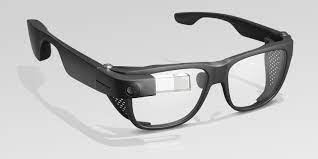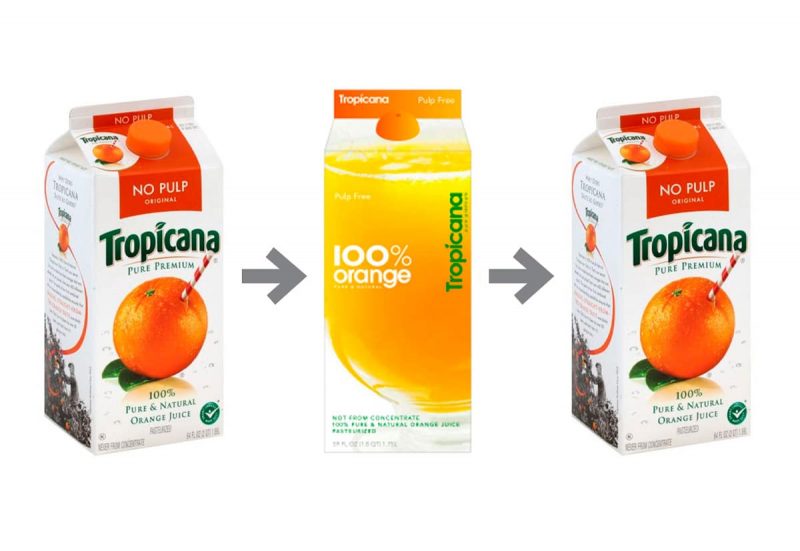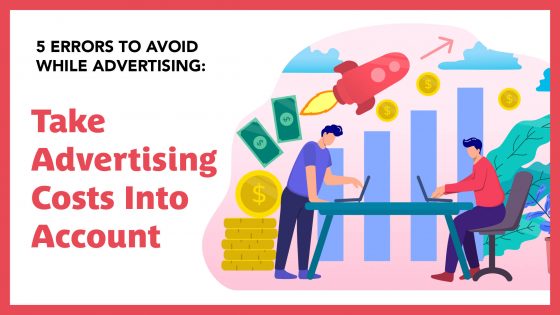5 Errors: Take Advertising Costs Into Account
Welcome to our first post in our new blog series, “Five Errors to Avoid While Advertising”. This series will guide you on what you can look out for while putting together a marketing plan for your business. Some mistakes are unavoidable and must be learned on an individual basis. On the other hand, there are some that many companies tend to make with their marketing that could be avoided. For our first error, many companies will not take advertising costs into account when developing their marketing plan. “Costs” does not necessarily mean in a financial sense; it can also relate to what a bad marketing plan will cost for your business’ reputation. There are many ways in which advertising costs could pan out.
One way is that you may not spend enough on your campaign despite having strong ideas. The company could be marketing to a completely irrelevant audience. It might be marketing in a way that doesn’t reach the target audience. The company may undergo a rebranding despite clear public opposition that you may not realize is even there. You could also spend too much on a campaign only for the product or service to fail miserably. The possibilities are endless.
“But,” you ask, “How do I know that I’m creating a good campaign? How will I know I am doing this correctly? There are so many ways it could go wrong!”
Yes, you’re absolutely right.
Unfortunately, there’s no way to know for certain whether or not your marketing campaign will succeed. However, there are steps you can take to avoid a total marketing or advertising disaster. You can also take steps to make your campaign more likely to have a level of success.
To summarize, doing your research is key. Figure out what types of advertising strategies make the most sense for your business. Pay attention to current trends. Read about some notable advertising examples that worked well and what didn’t work well. Get feedback from current customers, and find out how the public feels about your brand.
Have a basic understanding of everything that goes into a marketing and advertising campaign. If you do, you are more likely to avoid the error of overspending or underspending. You are also more likely to avoid tarnishing your business’ reputation a bad campaign would bring. The two concepts go hand in hand.
Let’s go through a few notable examples that illustrate some errors companies have made.
Example #1: Google Glass

Google is undeniably one of the most innovative and successful companies in the world. This is not only in the technological landscape but as a whole.
However, the business still fails quite often despite its accomplishments. One of the most notable and well-known in the public eye is Google Glass. Launched to the general public in 2014, the product cost $1,500 and represented an advancement in technology. Google Glass is a pair of smart glasses which allow users to work hands-free with access to the Internet.
The product had a great amount of potential. Why, then, did it fail to the extent that it did at the time of its release? While Google has what is a seemingly unlimited budget, money was not the issue in this case and did not affect advertising costs in that manner. However, it was cited as being too expensive for the average consumer.
Google’s main issue lay with the product having no clear purpose. Consumers were unsure why they should purchase something when the creators also did not know what it was for. Marketing for the product was never at a solid place. Was it for further social interaction via the web? Was it for medical professionals as an assistant for surgical procedures? Should it work for entertainment purposes, such as recording a concert, or, by illegal means, a film in theaters?
Many potential customers did not like the idea of the product. In this case, advertising costs do not necessarily refer to money but rather to the cost of losing clients.
Many places also banned Glass for its potential disruptions, including in movie theaters, schools, and private events.
Versions of Glass still exist and are used by notable companies today. However, it remains controversial for use by the general public. People have concerns about the lack of privacy and fears of secretly being recorded by the camera in the glasses.
What could Google do differently for this product for future releases? While the product has an overall neat concept, it would help to give it a clear purpose in its function. Glass should continue to keep marketing to companies where the product would benefit most rather than to individual consumers.
Example #2: Tropicana Failed Rebrand

In 2009, the juice brand Tropicana introduced a rebranding of their product through their packaging and other advertising means. This ended up being a costly mistake- an over $50 million mistake. In addition, the company suffered more than a 20% drop in sales in the first few months.
What went wrong?
Tropicana ultimately made the costly error of not understanding the target audience and its emotional attachment to the brand. Primarily known as a “Pure Premium” brand, people associate it with being much higher quality than the typical juice brand. People become attached to brands and can be disappointed when it, in their eyes, “downgrades”.
Another mistake Tropicana made was making too many changes at once. Consumers often did not realize the juice was the same product they had always known. There was a new logo. It lost the signature orange with the straw. There was a new brand design and new packaging features. It was simply too much at once.
These changes need to happen gradually for clients to get used to the new product. If changed, it needs to be kept relatively the same and modernized. An example of something that could have worked would have been to illustrate the orange with the straw. This would have eased customers into knowing this was still the same product while allowing the company to move forward with an evolving brand.
Tropicana ended up spending over $30 million on the rebrand. Only after the significant backlash received did they return to the original packaging, costing approximately another $20 million. This cost the company $50 million in total.
To give a summary: do not rebrand without data to back it up. Always listen to your audience. Do significant research before spending big money on what will end up being a failed marketing and advertising plan.
Example #3: McDonald’s Arch Deluxe

1996 saw the global fast-food brand McDonald’s beginning a new era for its menu. It unveiled the Arch Deluxe, a burger exclusively marketed to adults.
The company looked to expand its reputation past being the best restaurant for children. It invested $200 million into an advertising campaign for this new burger. It featured ingredients meant to be more desirable to adults, including a bigger burger patty and a special, secret sauce.
Marketing efforts called the Arch Deluxe “the burger with the grown-up taste”. Television commercials depicted children as grossed out by the burger while their parents loved the new taste. Advertising also featured the brand’s famous childlike mascot, Ronald McDonald, doing “grown-up” acts such as being in a business suit and golfing.
Despite best efforts and millions sunk into the campaign, the burger failed to produce much of a profit at all. McDonald’s removed it in 2000 and failed to acknowledge it again for years. What did the company do wrong?
Although McDonald’s did not have to worry about advertising costs in a financial sense, it still suffered in other ways. Much like Tropicana, McDonald’s failed to consider its true target audience, in this case, children and families. It isolated a significant portion of its audience and informed them that this product wasn’t for them. With this, the company risked losing the experience it had built: a place where everyone could conveniently eat together. It also risked having its primary consumer base, children, associate their food with being gross.
Proving to be out of touch with their customer base could have been a costly mistake for McDonald’s. Luckily, it was able to pull itself out of the hole it had created for itself with this advertising campaign. To this day, it maintains its rank in fast food.
What could McDonald’s have done differently? Introducing a new menu item is rarely a bad idea for a restaurant. Of course, it is also not a bad idea to advertise it. However, this can be done without isolating a good portion of your existing clientele. An ideal solution is to keep your existing clientele steady while slowly marketing to other customer bases.
What is there to learn from this (in a literal and figurative sense) error in advertising costs? Do not try to brand yourself as something you are not. It is okay to want to expand your audience, but do not remove the good relationships you already have.
Conclusion
To conclude, always take advertising costs into account when developing a marketing plan for your business. This is often interpreted to be in a financial sense. In reality, the importance lies with the true cost of what the campaign will bring to your business.
For your campaign to be a success, always listen to your target audience. Do your research on what they might want, and pay attention to how your audience responds to you. In the end, the customers you have will determine whether your business will succeed. Remember that when you are putting together your marketing campaigns.
There are other types of errors to avoid while advertising. Join us in several weeks when we post about our next topic, “Beautiful Design with No Purpose”. We will discuss how having beautiful aesthetics does not necessarily equal a good advertisement.

